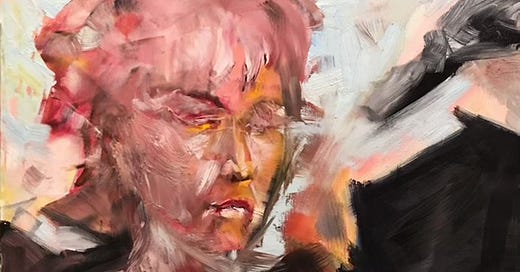♦♦♦[STORY] Pain and Truth: The Electricity Inherent to Killer Stories
My story isn't flat just because my plot is boring. It's also flat because my character never bleeds. As a writer, I dodged putting real pain on the page. Nice to characters = Boring to readers.
Every storyteller wants their story to resonate, to feel real. But if my experience is an indication, writers rarely thrust their characters into the maelstrom willingly. We must pitch them screaming into raging emotional storms, forcing them to face brutal truths. Pain and honesty are the root of compelling stories. I avoided them. Why? Because my impulse to protect them from harm presents directly in the fiction I’m writing. I must fight this impulse.
As writers, our characters' pain makes the story immersive and involving. Stories that lack it feel dishonest and shallow. That's why the French think our cinema is hopelessly delusional. Sooooo many happy endings. Tout est bien qui finit bien… sauf en vrai.
My Honest Inventory: Plot Wasn't Enough
My story had strong bones—motivation, conflict, escalating stakes. As I reread my draft, I realized something was missing or seemed pathetically weak. The character's emotional path felt fine on the surface, but the real pain, the unvarnished emotional truth, was thin. The wounds that define them, the lies they tell themselves, the contradictions and cognitive dissonance that real people live with, and the mask they present to the world: all these elements felt underexplored. If I'm honest, they were absent. I was pulling my punches.
What I Was Missing: Pain, Truth, and Depth
It wasn't just that my character needed a dilemma. Yes, actual dilemmas. When a character must choose between two equally painful paths, that's what a "Dilemma" is. A Dilemma in storytelling is not merely a synonym for a "problem." True dilemmas reveal deep character by showing us their behavior and reactions to being forced to make deeply unsettling choices (refer to McKee, Truby, and Coyne. They all stress this point.).
But it's the painful inner world that captivates and compels readers. Was I willing to write their pain, honestly? Was I willing to confront their core wound, the sacred flaw, the contradiction between who they are and who they want to be? It's hard for us to admit about ourselves, and harder yet to do it for our characters.
Lisa Cron, in Story Genius, puts it plainly:
"The protagonist's internal struggle—the misbelief that keeps them from seeing themselves and the world clearly—is the engine of the story."
(Story Genius, pg. 9)
But Will Storr's The Science of Storytelling advances this further with the idea of the sacred flaw. Storr argues that the "big lie" isn't just a mistaken belief—it is the central pillar of the character's identity, an essential delusion that gives their life structure and meaning.
"The Sacred Flaw isn't simply a problem to be solved; it's the fundamental truth your character would do almost anything to avoid seeing. It is sacred because it feels essential to who they are."
(The Science of Storytelling, Will Storr, pg. 49)
John Truby, author of Anatomy of Story, and Anatomy of Genre, insists,
"Character change comes from the hero's ability to face and overcome the great weakness or moral failing within himself."
(The Anatomy of Story, pg. 57)
Robert McKee, the guru of screenwriters worldwide and leader of countless workshops, is clear:
"True character is revealed under the pressure of powerful internal and external forces. The greater the pressure, the deeper the revelation, the truer the choice to the character's essential nature."
(Story, pg. 101)
Putting It Into Action for My Story
Realizing this, I returned to my Depth component in the 3D Character Framework. I developed this as an approach to forming and developing Characters with dimension. The 3 D’s are Desire, Depth, and Dynamics. My Depth component breaks into 4 sections:
Core Wound: What old pain shapes my character's actions and reactions?
The Sacred Flaw/Big Lie: What is the core, identity-defining delusion that organizes their world—the sacred principle they cannot question without jeopardizing their entire sense of self? (Storr)
Core Contradiction/Cognitive Dissonance: Where do their beliefs, actions, and desires conflict? What contradictory ideas do they maintain simultaneously?
The Mask: What persona do they present to hide their flaws from the world and themselves?
I saw that I'd written around these questions rather than through them. My character suffered setbacks, but I hadn't forced them to confront the real pain—the core wound or the dissonance between their public mask and private innermost self. Most importantly, I hadn't tested the sacred flaw—the self-protective belief at the center of their identity. My story is a single issue. I won’t be able to hit all these. But I intend to plant some seeds.
Keep reading with a 7-day free trial
Subscribe to The Invisible Thread - Making Comics by Charles Houghton to keep reading this post and get 7 days of free access to the full post archives.





